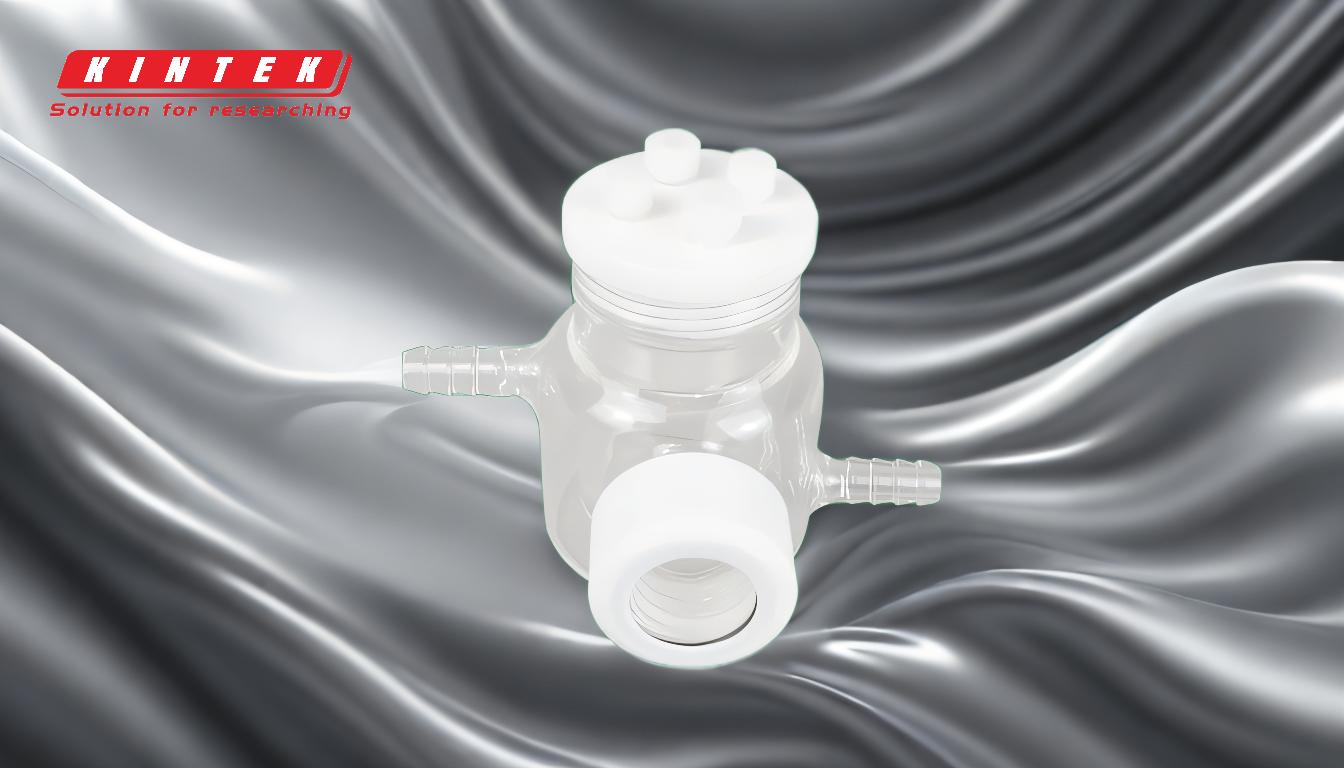Molecular distillation is a specialized separation technique that operates under high vacuum conditions, leveraging the differences in the mean free path of molecules to separate and purify thermally unstable compounds with low volatility and high boiling points. The process involves heating a liquid mixture on a surface, allowing molecules to escape into the gas phase, and then condensing them on a cooler surface. The key to its effectiveness lies in the short residence time in the heating zone, minimized intermolecular collisions, and low operating temperatures, which prevent thermal degradation of sensitive materials. This method is particularly useful for separating compounds with similar boiling points or those that are heat-sensitive.
Key Points Explained:

-
Principle of Molecular Distillation:
- Molecular distillation is based on the mean free path of molecules, which is the average distance a molecule travels before colliding with another molecule. Under high vacuum conditions, the mean free path increases, allowing molecules to travel further without colliding.
- The formula for the mean free path is:
[ L = \frac{0.707K \cdot T}{\pi d^2 P} ] Where:- (L) = mean free path,
- (K) = Boltzmann constant,
- (T) = temperature,
- (d) = effective molecular diameter,
- (P) = pressure.
- The process ensures that molecules with different mean free paths are separated based on their individual travel distances, enabling efficient separation of compounds.
-
High Vacuum Conditions:
- A high vacuum is essential for molecular distillation because it reduces the pressure in the system, increasing the mean free path of molecules. This minimizes intermolecular collisions, allowing for the separation of compounds based on their volatility and molecular weight.
- The vacuum also lowers the boiling points of the compounds, enabling distillation at much lower temperatures than conventional methods. This is crucial for heat-sensitive materials that would degrade at higher temperatures.
-
Heating and Evaporation:
- The liquid mixture is spread as a thin film on a heated surface, ensuring uniform heating and minimizing the residence time in the heating zone. This reduces the risk of thermal degradation.
- As the liquid is heated, lighter molecules evaporate first, escaping from the liquid surface into the gas phase. The difference in the mean free paths of the molecules determines how far they travel before condensing.
-
Condensation:
- After evaporation, the molecules travel a short distance to a cooled condenser surface, where they are collected. The distance between the heating and cooling surfaces is designed to be less than the mean free path of the molecules, ensuring efficient separation.
- The condenser rapidly cools the vapor, causing it to condense back into a liquid. This process is highly efficient because it minimizes the time the molecules spend in the vapor phase, reducing the chance of intermolecular collisions.
-
Separation Based on Molecular Weight and Volatility:
- Molecules with shorter mean free paths (heavier or less volatile) will condense closer to the heating surface, while lighter or more volatile molecules will travel further before condensing.
- This difference in travel distance allows for the separation of compounds with similar boiling points or those that are difficult to separate using traditional distillation methods.
-
Advantages of Molecular Distillation:
- Low Operating Temperatures: The high vacuum allows distillation at much lower temperatures, making it ideal for heat-sensitive materials.
- Short Residence Time: The rapid heating and cooling minimize the time the material spends in the heating zone, reducing the risk of thermal degradation.
- High Purity: The process achieves high separation efficiency, resulting in high-purity products.
- Versatility: It can handle complex mixtures, including those with high boiling points or low volatility.
-
Applications:
- Molecular distillation is widely used in industries such as pharmaceuticals, food processing, and chemical manufacturing. It is particularly useful for:
- Purifying vitamins, essential oils, and other heat-sensitive compounds.
- Separating fatty acids, waxes, and other high-boiling-point materials.
- Concentrating natural products like fish oils and plant extracts.
- Molecular distillation is widely used in industries such as pharmaceuticals, food processing, and chemical manufacturing. It is particularly useful for:
-
Equipment Design:
- The equipment typically includes:
- A heating surface to evaporate the liquid mixture.
- A condenser to cool and collect the vapor.
- A vacuum pump to maintain high vacuum conditions.
- A pivoting scrubber or wiper to spread the liquid into a thin film on the heating surface, ensuring efficient heat transfer and evaporation.
- The equipment typically includes:
By understanding these key points, one can appreciate the precision and efficiency of molecular distillation, making it an invaluable tool for separating and purifying complex and heat-sensitive materials.
Summary Table:
| Key Aspect | Details |
|---|---|
| Principle | Based on the mean free path of molecules under high vacuum conditions. |
| High Vacuum | Reduces pressure, increases mean free path, and lowers boiling points. |
| Heating & Evaporation | Liquid is heated as a thin film, minimizing thermal degradation. |
| Condensation | Vapor condenses on a cooled surface, ensuring efficient separation. |
| Advantages | Low temperatures, short residence time, high purity, and versatility. |
| Applications | Pharmaceuticals, food processing, and chemical manufacturing. |
| Equipment | Heating surface, condenser, vacuum pump, and pivoting scrubber. |
Discover how molecular distillation can enhance your processes—contact our experts today for more information!












